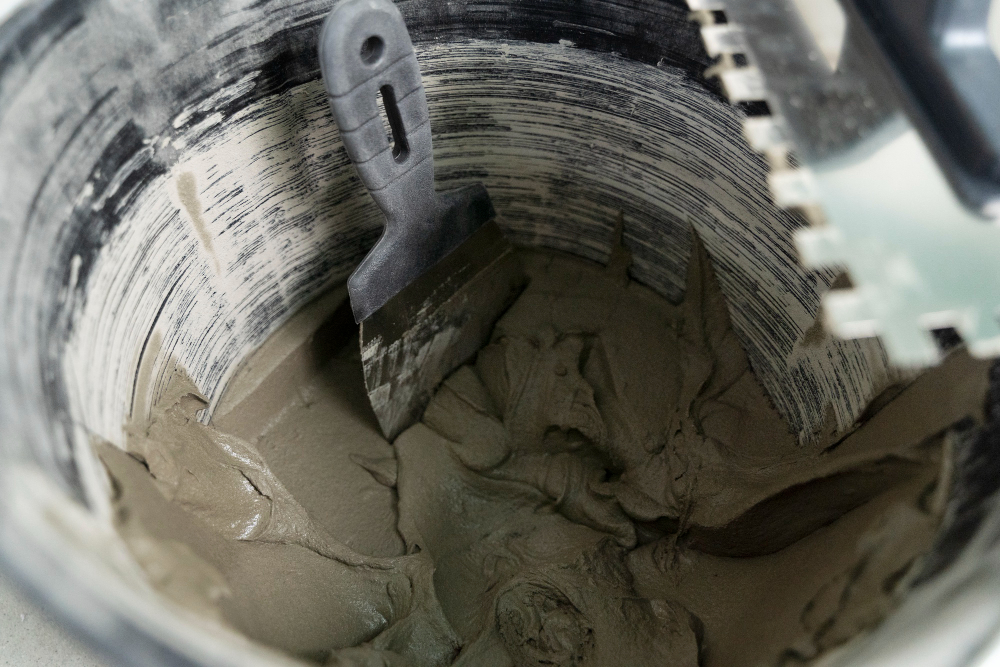When you’ve just completed a drywall project, you might find yourself with leftover drywall mud (joint compound). Instead of tossing it out, you may wonder: How long does drywall mud last after opening? This is a common question, especially for DIYers and professionals who prefer to store materials for future use. In this article, we’ll dive deep into understanding the shelf life of drywall mud after opening, the best storage practices, factors that can affect its lifespan, and how to tell if your drywall mud has gone bad.
If you’re looking for long-term storage tips or want to know how to maximize the shelf life of your drywall mud, keep reading to get all the answers.
How Long Will Drywall Mud Last After Opening?
The shelf life of drywall mud after opening is typically up to 9 months, provided it is stored properly. Storing it in the right conditions will ensure that it remains usable for future projects, which can save you both time and money. However, certain factors can influence its longevity, such as the type of joint compound, the brand, and how well it’s sealed.
For the drywall mud to last for months after opening, two critical factors come into play: airtight sealing and proper storage conditions. Let’s break this down:
Airtight Sealing: The most important thing you can do is ensure that the container is tightly sealed after each use. Drywall mud is very sensitive to moisture, and even a small amount of exposure can cause it to spoil or dry out. If air gets into the container, the mud will start hardening or developing mold.
Proper Storage Temperature: The ideal storage temperature for drywall mud is between 50°F and 70°F (10°C – 21°C). If the container is exposed to extreme temperatures, the mud may freeze or harden, leading to spoilage. Cold temperatures can cause the mud to become lumpy, while excessive heat can make it dry and unusable.
Following these two guidelines, your drywall mud should last up to 9 months after opening. However, it’s worth noting that even well-sealed drywall mud should be used as soon as possible for the best results.
Factors That Impact Drywall Mud’s Lifespan
Even though drywall mud can last up to 9 months, several factors can significantly reduce its shelf life. Here are three major factors that you should be aware of:
Sealing Quality
The number one reason drywall mud goes bad prematurely is poor sealing. If the container isn’t sealed properly after each use, moisture will find its way in. This will cause the mud to harden or mold, rendering it useless.
Solution: Always double-check that the lid is on tight and clean before sealing. If the original container lid no longer fits properly, consider transferring the mud to another airtight container.
Storage Conditions
Storing the mud in an area that is too humid or too hot can quickly degrade its quality. Extreme temperatures, especially below freezing or above 70°F, can change the compound’s consistency, making it difficult to work with.
Solution: Store your drywall mud in a cool, dry place, such as a basement or garage, where the temperature remains stable.
Usage Frequency
If you are constantly opening the container to use small amounts of drywall mud, the constant exposure to air can dry out the mud faster than expected.
Solution: If you need only a small amount of drywall mud for a project, scoop out what you need and seal the container immediately. This limits exposure to air and keeps the rest of the mud fresh.
How to Tell If Drywall Mud Has Gone Bad
Knowing how long drywall mud lasts after opening is only useful if you can also identify when it has gone bad. Here are some clear signs that your drywall mud is no longer good to use:
Texture and Consistency
The most noticeable sign of bad drywall mud is a change in texture. Fresh mud should be smooth and easy to spread. If the mud has become lumpy, too thick, or hard, it’s likely past its prime.
Foul Smell
If the drywall mud smells sour or musty, it has likely been exposed to moisture and is starting to rot or develop mold. Fresh drywall mud should have little to no odor.
Visible Mold
One of the most obvious signs of spoilage is mold on the surface. Mold is a clear indicator that moisture has infiltrated the container, and it’s best to discard the mud immediately.
Expired Date
Most drywall mud containers come with an expiry date. Even though drywall mud can last up to 9 months after opening, it’s a good idea to check the expiration date on the container before using it. If it’s past the date, you should dispose of it.
Best Practices for Storing Drywall Mud
To extend the shelf life of drywall mud and keep it usable for as long as possible, follow these storage tips:
Use an Airtight Container
After each use, ensure the container is airtight. If the original packaging has become damaged or the lid doesn’t fit snugly, transfer the mud into a different, airtight container. This will prevent air and moisture from getting in.
Store in a Cool, Dry Place
Find a location in your home that maintains a cool, dry environment, ideally around 50°F to 70°F. Avoid areas that experience large fluctuations in temperature, such as garages that get very cold in winter or extremely hot in summer.
Use a Moisture Barrier
If you’re storing your drywall mud for an extended period, placing a plastic barrier (such as plastic wrap) over the surface of the mud before sealing the container can help reduce moisture exposure.
Stir Before Use
After the mud has been stored for a while, it’s essential to stir it before use. If it has been stored correctly but looks separated or watery, give it a thorough mix to restore its smooth consistency.
Can You Revive Drywall Mud After It Hardens?
If you’ve left your drywall mud container partially open or it’s been exposed to air for too long, you might notice that the mud has started to harden. The good news is that, in some cases, you may be able to revive hardened drywall mud. Here’s how:
Add Water: If the mud is just slightly dry or thick, adding a little water can sometimes restore its original consistency. Start by adding a small amount of water and mixing it thoroughly. Continue adding water until the mud reaches a smooth, spreadable texture.
Mix Well: Once you’ve added the water, make sure to mix it well. You can use a drywall mud mixer attachment on a power drill to ensure an even consistency.
However, if the mud is completely dried out or contains lumps that won’t break up, it’s better to discard it and start fresh.
Conclusion: How Long Does Drywall Mud Last After Opening?
In conclusion, the shelf life of drywall mud after opening is generally up to 9 months, as long as it’s stored properly in a sealed, airtight container and kept at an ideal temperature of 50°F to 70°F. Several factors can affect its lifespan, including improper sealing, exposure to extreme temperatures, and frequent use.
By following best storage practices, checking for signs of spoilage, and reviving the mud when possible, you can make your drywall mud last as long as possible, saving you both time and money on future projects.
So next time you’re left with a partially used container of drywall mud, remember these tips to ensure it remains fresh and usable for months to come. Drywall mud doesn’t have to go to waste if you store it right and know how to tell when it’s past its prime. Happy drywalling!
This version integrates natural keyword usage and emphasizes practical, hands-on advice that resonates with DIYers and professionals alike, helping it potentially rank well without relying heavily on backlinks or external authority.

